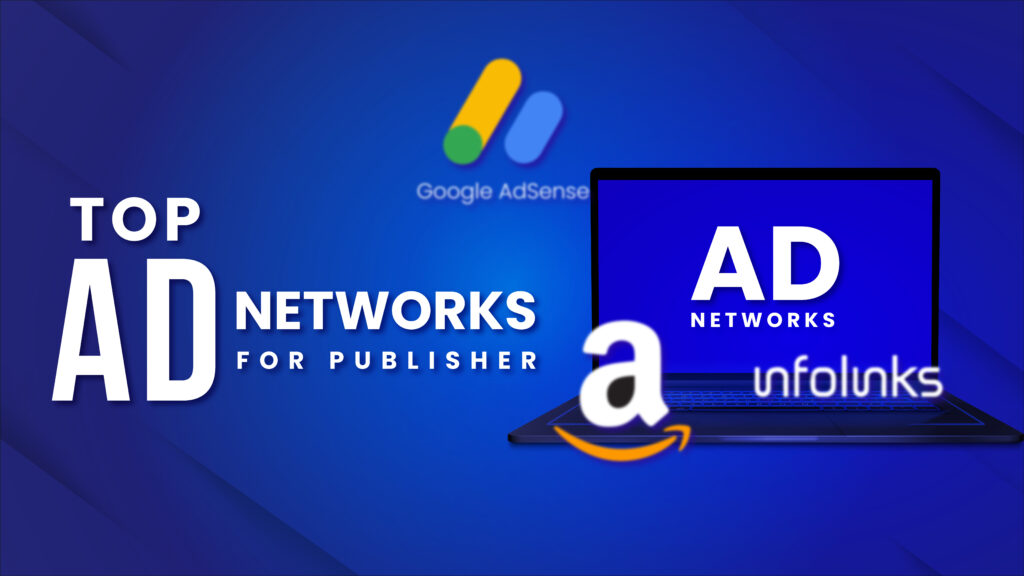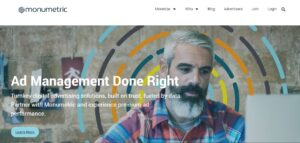If you attempted to figure out how to monetize your web pages, then you know it’s hard to decide which ad network to choose. It feels like you entered a market with competitors selling similar products because the choices are many and each claims to be the best. Well, with the arrival of new platforms and technologies in 2025, such choices have only become more complex.
Here’s the deal, ad networks are not uniform. Some will assist you in maximizing the returns on your hard-earned visitors while some might make you feel angry. That is the reason why we have prepared this guide on the best ad networks for publishers in the year 2022. This list is useful for whatever type of web audience you have, large or small, and aims to identify the ones most appropriate for your site, and finally convert those page impressions into reliable and predictable revenue. Alright, let’s get started.
15 Best Ad Networks For Publishers in 2025:
In 2025, the following ad networks will not only be on the cutting edge but will enable publishers to reach the peak of their revenue-earning potential. Each of them has its distinct qualities, benefits, and drawbacks so let us touch briefly on what the specifics of these networks are.
1. Google AdSense:
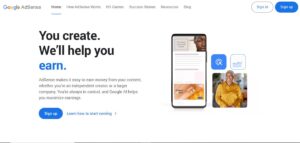
Among various ad networks for publishers using Google AdSense is the most common and it is with a reason. It has an easy learning curve, it is trusted and accepted, and it uses Google’s algorithms to put ads relevant to Internet users. Be it a single-page website or a big website with readership, AdSense adjusts to the conditions of engagement.
Best Features:
- Offers the widest selection of advertisers.
- Relevance of Ads is made possible with contextual targeting.
- Payments are made in a straightforward manner.
Pros:
- Provides an easy-to-use interface with comprehensive reporting tools.
- Offers dependable monthly returns.
- Suitable for both small and big publishers.
Cons:
- There are challenges in ensuring that the approval of the offered materials is in accordance with the established rules and standards for such materials.
- It’s not very good in revenue sharing ratios compared to other network
2. Media.Net:

Media.net, powered by Yahoo and Bing, is a contextual ads platform that experts will adore as an alternative to AdSense. It excels with its top-notch display ads that blend seamlessly into your content, making it impossible not to mention it online.
Best Features:
- Excellent for websites with US or UK traffic.
- Offers native ads that look natural within your content.
- Dedicated account managers for personalized support.
Pros:
- Competitive payouts, especially for high-traffic sites.
- Works well with niche websites.
- Ad customization options for better design integration.
Cons:
- Limited advertiser pool compared to Google AdSense.
- The approval process can take time.
3. Ezoic:
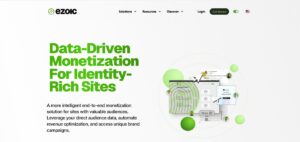
Ezoic is an AI-powered ad network that optimizes your site’s ads to boost earnings. It’s perfect for publishers looking to maximize revenue with advanced tools and tailored recommendations.
Best Features:
- AI-driven ad placement to maximize revenue.
- Access to multiple ad networks through a single platform.
- Tools to improve website speed and user experience.
Pros:
- Higher earnings potential through optimization.
- Works well for small and mid-sized publishers.
- Transparent analytics to track performance.
Cons:
- Integrates with your site (can be complex for some individuals).
- Least traffic demand of 10,000 visitors per month.
4. Propeller Ads:
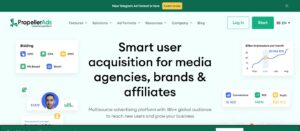
Propeller Ads offers diverse ad formats, including pop-under, push notifications, and native ads. It’s perfect for high-traffic publishers, particularly those focusing on international audiences.
Best Features:
- Multiple ad formats to suit different website types.
- Beginner-friendly setup and fast approval process.
- Real-time optimization for better performance.
Pros:
- No strict traffic requirements—great for new publishers.
- High fill rates for global traffic.
- Weekly payouts.
Cons:
- Some ad formats, like pop-under, can disrupt user experience.
- CPM rates may vary depending on traffic quality.
5. Ad Thrive:

Ad Thrive is a top ad network for content-rich sites, especially blogs in food, parenting, and lifestyle niches. It offers high commission rates but requires a minimum traffic threshold to qualify.
Best Features:
- Premium ad campaigns with high CPM rates.
- Excellent customer support and account managers.
- Focused on improving user experience alongside revenue.
Pros:
- Tailored ad strategies for individual publishers.
- Works best for high-quality, high-traffic sites.
- Transparent revenue share model.
Cons:
- Requires a minimum of 100,000 monthly pageviews.
- Not beginner-friendly due to exclusivity.
6. Monumetric:
Monumetric allows small publishers to easily transition from low CPM ads to higher-paying premium ad solutions with a minimum of 10,000 page views per month. It is a perfect solution for people who can’t join networks like AdThrive.
Best Features:
- Supports smaller publishers with quality ads.
- Offers personalized ad placement for better revenue.
- Balanced focus on user experience and monetization.
Pros:
- Low entry requirements compared to similar networks.
- Dedicated support for publishers.
- High fill rates and competitive CPMs.
Cons:
- Requires a $99 setup fee for smaller publishers.
- Performance may vary based on traffic location.
7. Revcontent:
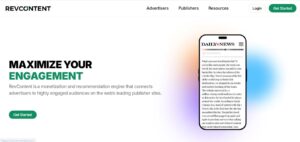
This native ad network is highly effective and recognizable, thanks to its engaging and natural-looking ads. It’s perfect for publishers with a loyal audience who prefer ads that seamlessly blend into their content.
Best Features:
- High-quality native ads that match your content.
- Advanced targeting options for better engagement.
- Works well with premium publishers.
Pros:
- Excellent for sites with niche audiences.
- High CPC rates for quality traffic.
- Clean, non-intrusive ad formats.
Cons:
- Requires a minimum of 50,000 monthly pageviews.
- Limited support for smaller publishers.
8. Sovrn //Commerce (VigLink)
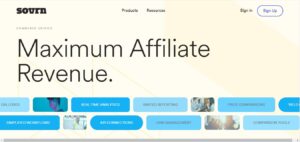
Sovrn //Commerce (formerly VigLink) specializes in affiliate marketing and monetizing with outbound links. In case your site provides users with recommendations, or contains links to the shops this ad network will enable one to earn commissions without effort.
Best Features:
- Automatically monetizes outbound links on your site.
- Works seamlessly with e-commerce and product review websites.
- Offers detailed analytics to track performance.
Pros:
- Ideal for publishers with affiliate marketing goals.
- No upfront requirements—easy to get started.
- Compatible with multiple ad networks simultaneously.
Cons:
- Earnings depend heavily on the quality of your traffic.
- Limited options for non-commerce content.
9. Infolinks:

Infolinks is known for its in-text ads, which appear as highlighted words or phrases in your content. It’s a non-intrusive solution for publishers looking to monetize their sites without compromising user experience.
Best Features:
- Multiple ad formats, including in-text, in-frame, and in-fold ads.
- No minimum traffic requirements—great for smaller publishers.
- Easy integration with just a snippet of code.
Pros:
- Non-disruptive ads that don’t interfere with content flow.
- Fast approval process and simple setup.
- Works well for sites with textual, information-heavy content.
Cons:
- Lower CPM rates compared to display ad networks.
- Limited ad formats for visual-heavy websites
10. Amazon Ads (Associates)
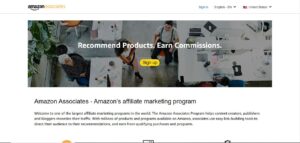
Amazon Ads is a great option for publishers in affiliate marketing or e-commerce. By promoting Amazon products through display ads or affiliate links, publishers earn commissions on every sale made through their site.
Best Features:
- Access to Amazon’s vast product catalog for promotion.
- Highly relevant ads based on user interests and shopping behavior.
- Easy integration with websites or blogs.
Pros:
- High earning potential for publishers in product-focused niches.
- Trusted brand with global reach.
- Commissions on all qualifying purchases, not just the linked product.
Cons:
- Earnings depend on product sales, not clicks or impressions.
- Commission rates vary by category and can be lower for some products.
11. Taboola:
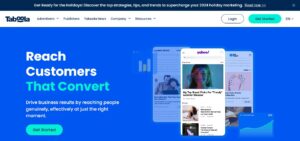
Taboola specializes in content discovery ads, making it perfect for publishers promoting sponsored articles or videos. It’s a powerful native ad platform that boosts engagement and revenue.
Best Features:
- Engaging “recommended for you” ads at the bottom of articles.
- Strong focus on promoting high-quality, click-worthy content.
- Excellent targeting options for niche audiences.
Pros:
- High engagement rates through native ads.
- Works well for publishers with significant traffic.
- Flexible payment models, including CPC and CPM.
Cons:
- Requires a minimum of 500,000 monthly pageviews.
- Can feel intrusive if not integrated well with site design.
12. Outbrain:

Like Taboola, Outbrain specializes in content discovery and native ads. It helps publishers monetize by recommending engaging content to their audience, often resulting in higher click-through rates.
Best Features:
- AI-driven recommendations for maximum engagement.
- Customizable ad placement options.
- Ideal for publishers with high-quality, editorial content.
Pros:
- High-quality ad network with a focus on content relevance.
- Strong partnerships with premium advertisers.
- Higher CPC rates compared to many competitors.
Cons:
- High traffic requirements (100,000+ monthly visitors).
- Not suitable for smaller publishers or blogs.
13. SHE Media:

SHE Media is a network tailored for women-focused publishers. Covering niches like lifestyle, parenting, and wellness, it offers unique opportunities for publishers targeting female audiences.
Best Features:
- Tailored for women-focused content creators.
- Offers events and community support for publishers.
- Premium ad placements with competitive CPM rates.
Pros:
- High payouts for niche content sites.
- Dedicated support and resources for publishers.
- Works with sites of varying sizes.
Cons:
- Limited to publishers with women-focused content.
- May not be the best choice for more general websites.
14. Pop Ads:

PopAds is one of the highest-paying ad networks for pop-under ads. It’s a great option for publishers with global traffic who want to earn quickly through high-impact ad formats.
Best Features:
- High CPM rates for pop-under and pop-up ads.
- Flexible payment options, including daily payouts.
- No strict traffic requirements—ideal for smaller sites.
Pros:
- Instant approval process and easy setup.
- Works well for sites with international traffic.
- Fast and frequent payouts.
Cons:
- Pop-up ads can negatively impact user experience.
- Not suitable for sites with a highly professional audience.
15. Adsterra:
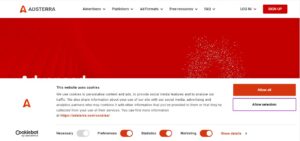
Adsterra provides a variety of ad formats, including banners, pop-under, and native ads. Known for its global reach and competitive rates, it’s a great option for publishers with diverse audiences.
Best Features:
- Supports various ad formats, including social bar and direct links.
- High fill rates for both desktop and mobile traffic.
- Advanced fraud protection for safer monetization.
Pros:
- Low entry requirements for new publishers.
- Quick and reliable payouts.
- Flexible ad placement options.
Cons:
- CPM rates depend heavily on traffic quality and location.
- Some ad formats may disrupt user experience.
1. What Are Ad Networks and How Do They Benefit Publishers?
To monetize your website, ad networks play a key role. But how do ads appear on websites, and how do publishers profit from them? Ad networks act as intermediaries, connecting advertisers promoting their products with publishers seeking to earn by displaying those ads.
2. How Can Ad Networks Help Publishers Make More?
For publishers, ad networks can be viewed as a way of passive income without having to put in any effort. They do the hard work of searching for advertisers, inserting ads on your pages, and maintaining and monitoring all processes. Whether you are a blogger or own a big site, ad networks do the dirty work and allow you to focus on increasing your audience.
3. What to Consider while Selecting an Ad Network:
Not all ad networks are the same. Picking the wrong one can make or break your monetization efforts. Everything from ad targeting through easy integration to even high-quality and paying ads comes into consideration. In this particular section, we are going to address the factors in order to help you make an easy decision without second-guessing yourself.
4. 2025 Trends: What are the Evolutionary Forces at Work in the Ad Networks Industry?:
The ad arena is always buzzing with activity, and 2025 has not been and will not be an exception. With AI taking the lead, programmatic ads and mobile-first platforms are turning out to be a game changer for publishers. How do you remain a step ahead of everyone else? Let’s zoom into the key ad trends that are forecasted to dominate this year’s ad networks and optimally use them to your advantage.
FAQs:
1. What is an ad network, and how does it work?
An ad network connects advertisers with publishers, delivering targeted ads to boost engagement and revenue. It simplifies monetization for publishers by automating placements, tracking performance, and handling payments.
How do ad networks help publishers earn revenue?
Ad networks help publishers earn through various pricing models:
- Cost Per Click (CPC): Publishers earn when users click on an ad.
- Cost Per Mille (CPM): Publishers get paid for every 1,000 ad impressions.
- Revenue Sharing: Some networks share a percentage of the ad revenue with publishers.
By using advanced targeting, ad networks serve ads that resonate with your audience, boosting engagement, click-through rates, and revenue potential.
3. Can Small publishers use ad Networks?
Yes, Ad networks like Info links, Propeller Ads, and Adsterra are great for small publishers due to low traffic requirements, while premium options like Ad Thrive and Mediavine need higher traffic to qualify.
4. Which ad network is best for Beginners?
For beginners, Google AdSense, Media.net, or Infolinks are great choices. These networks are easy to set up, have simple approval processes, and offer reliable payouts. They are also flexible, allowing you to scale as your traffic grows.
5. Are ad networks safe to use?
Reputable ad networks like Google AdSense, Media.net, and Ad Thrive are safe and reliable. However, always research a network before signing up. Avoid networks with poor reviews, Sammy ad practices, or unclear payment terms.
Conclusion: Our Recommendation
Choosing the right ad network is key to maximizing your revenue and enhancing your website’s user experience. With so many options, it’s important to match the network with your site’s traffic, audience, and goals.
For beginners, Google AdSense or Media.net are great due to their simplicity and versatility. For sites with growing traffic, Ezoic or AdThrive provide advanced tools and better payouts. If native advertising is your focus, Taboola or Outbrain can engage your audience with content-driven ads.
No single ad network suits every publisher. To boost earnings, experiment with different networks, analyze performance, and find the best fit. Remember, quality traffic and engaging content are the foundation of monetization success.
By choosing the right ad networks, you can elevate your website’s revenue in 2025 and beyond. Start optimizing today!


